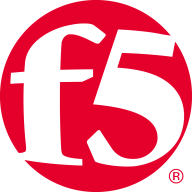

Check Point CloudGuard CNAPP and NGINX App Protect compete in the security and application protection market. NGINX App Protect has the upper hand due to its superior features and higher long-term value despite higher costs.
Features: Check Point CloudGuard CNAPP is recognized for robust threat prevention, scalability, and detailed reporting. It also offers automated compliance features. NGINX App Protect features powerful traffic management, advanced threat mitigation, and seamless integration with existing infrastructures. It also offers ease of configuration and extensive customization options.
Room for Improvement: Check Point CloudGuard CNAPP requires better user experience, with improvements in navigation and reducing integration complexity. More cost-effective pricing models are also needed. NGINX App Protect would benefit from enhanced documentation and support resources, specifically more comprehensive guides and quicker response times.
Ease of Deployment and Customer Service: Check Point CloudGuard CNAPP is appreciated for straightforward deployment and responsive customer support, though integration challenges are noted. NGINX App Protect has a more complex deployment process but is valued for its flexibility and quality of customer support.
Pricing and ROI: Check Point CloudGuard CNAPP faces criticism for high initial setup costs, but users report substantial ROI due to comprehensive features. NGINX App Protect, despite pricey setup costs, delivers higher long-term value and efficiency, with users frequently justifying the expense due to its advanced feature set and reliable protection.
The compliance has improved as our overall compliance score against CIS benchmark has improved from around 72 to 92% within the first three months of adoption.
Monitoring cloud security automatically ensures a return on investment.
When I need help or have open questions, or if I require the capability to deploy a quick test environment, there are always people I can contact at Check Point to get my information or the environment as fast as I need it.
I have a dedicated support engineer and a presales engineer dedicated to me.
Customer support for Check Point CloudGuard CNAPP has been responsive and knowledgeable.
They were quick and efficient when we had issues.
Check Point CloudGuard CNAPP scales efficiently in the multi-cloud environment.
I never had any performance-related issues.
If there are errors, it is sometimes challenging to elaborate or troubleshoot since it is not transparent enough to understand what to search for.
It is rapidly evolving, and sometimes mistakes occur, necessitating testing.
It is a quality solution, and I would rate its stability as eight out of ten.
I need more integration from the code-to-cloud principle.
It would be nice to have periodic updates on what people should do, maybe with some analysis or something.
I require consistency in the user interface to ensure everything is streamlined into the same look and feel.
There was more information from F5 regarding hardware requirements and specifications to deploy the service.
In terms of ROI, we can see time savings for audit preparation of at least 30-40%.
It is not cheap, of course, yet it is a necessity.
From a licensing and cost perspective, it is really competitive.
One of the main reasons we use the solution is that it is great at identifying risks that are critical to our business.
The CDR helps detect anomalous behavior and respond to threats before they become an issue.
Check Point CloudGuard CNAPP offers a unified, modular platform that combines CSPM, CWPP, CIEM, code security, and cloud detection and response.
The most valuable feature is the ability to operate in a DevOps environment and to be configured through API and pipeline by the developers themselves.
Detecting bots and blocking IPs have proven effective for securing applications.
| Product | Market Share (%) |
|---|---|
| Check Point CloudGuard CNAPP | 1.9% |
| NGINX App Protect | 0.3% |
| Other | 97.8% |


| Company Size | Count |
|---|---|
| Small Business | 54 |
| Midsize Enterprise | 17 |
| Large Enterprise | 57 |
| Company Size | Count |
|---|---|
| Small Business | 8 |
| Midsize Enterprise | 5 |
| Large Enterprise | 11 |
Check Point CloudGuard CNAPP offers comprehensive cloud security with features like dynamic access control, asset protection, and compliance checks, tailored for organizations seeking enhanced governance across AWS, Azure, and GCP platforms.
Check Point CloudGuard CNAPP provides robust capabilities, including centralized firewall management, IAM scanning, and real-time visibility. Its strengths lie in predictive visualization, threat intelligence, and auto-remediation, making it a valuable tool for risk mitigation and compliance management. The platform's integration and responsiveness enhance cloud security, ensuring alignment with industry standards and effective threat protection.
What are the key features of Check Point CloudGuard CNAPP?Organizations in finance, healthcare, and retail frequently implement Check Point CloudGuard CNAPP for compliance and security across cloud environments. It assists with workload protection, threat detection, and regulatory obligation fulfillment, proving effective for securing applications and monitoring API interactions.
NGINX App Protect application security solution combines the efficacy of advanced F5 web application firewall (WAF) technology with the agility and performance of NGINX Plus. The solution runs natively on NGINX Plus and addresses some of the most difficult challenges facing modern DevOps environments:
NGINX App Protect offers:
We monitor all Container Security reviews to prevent fraudulent reviews and keep review quality high. We do not post reviews by company employees or direct competitors. We validate each review for authenticity via cross-reference with LinkedIn, and personal follow-up with the reviewer when necessary.